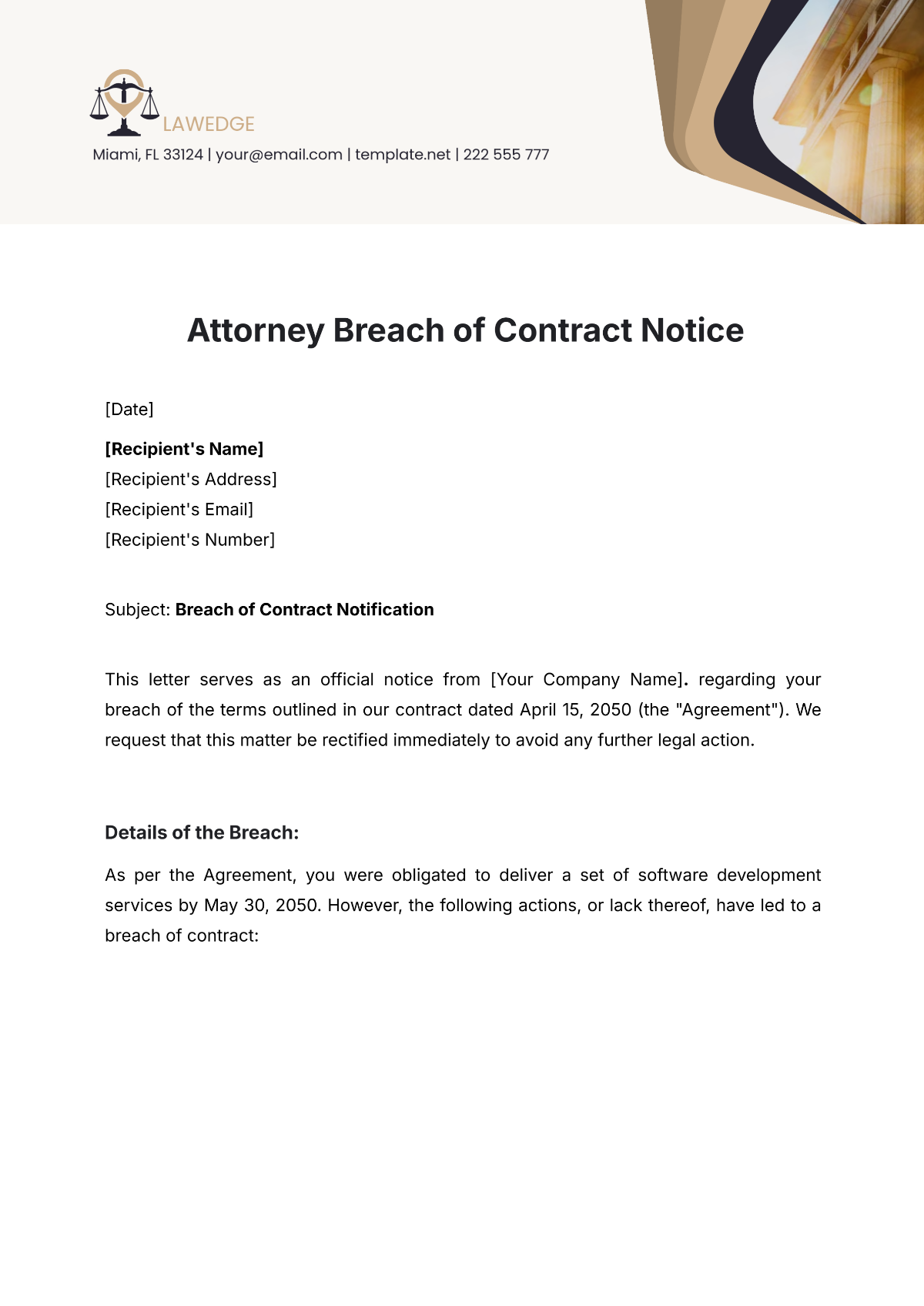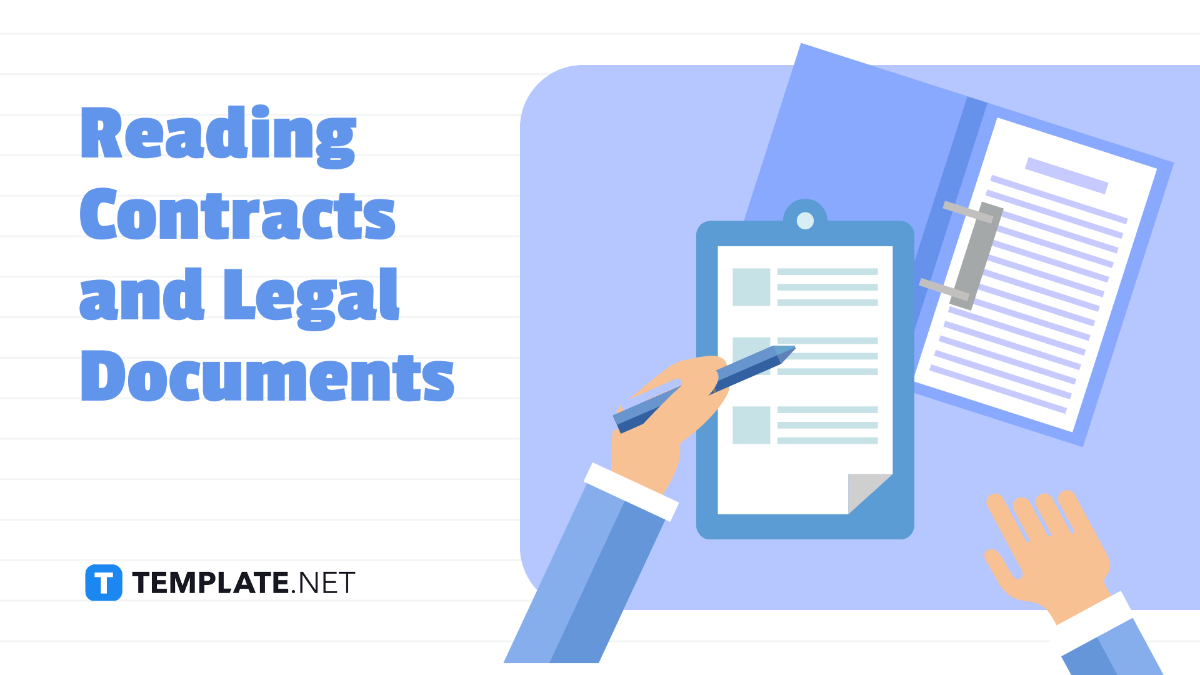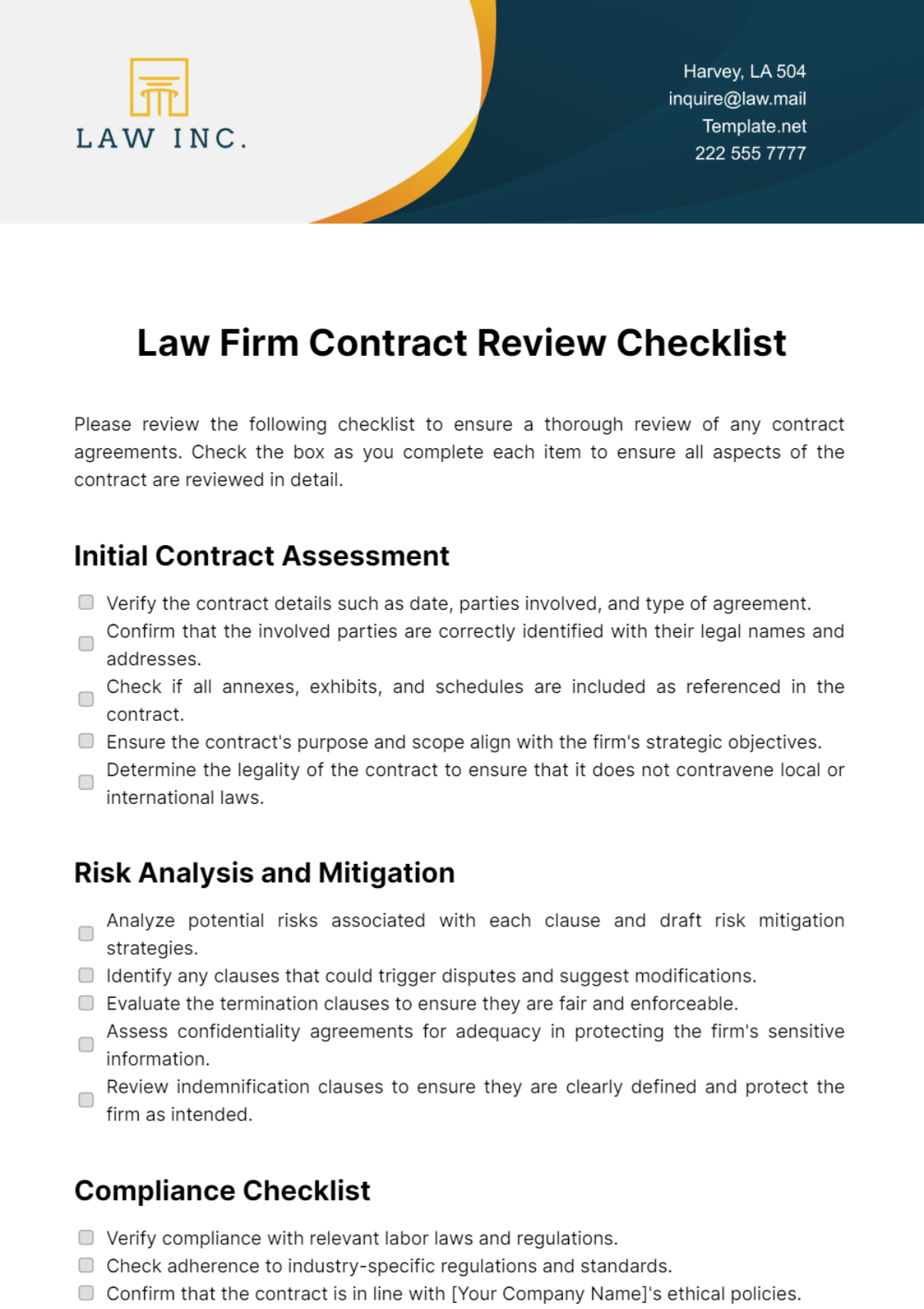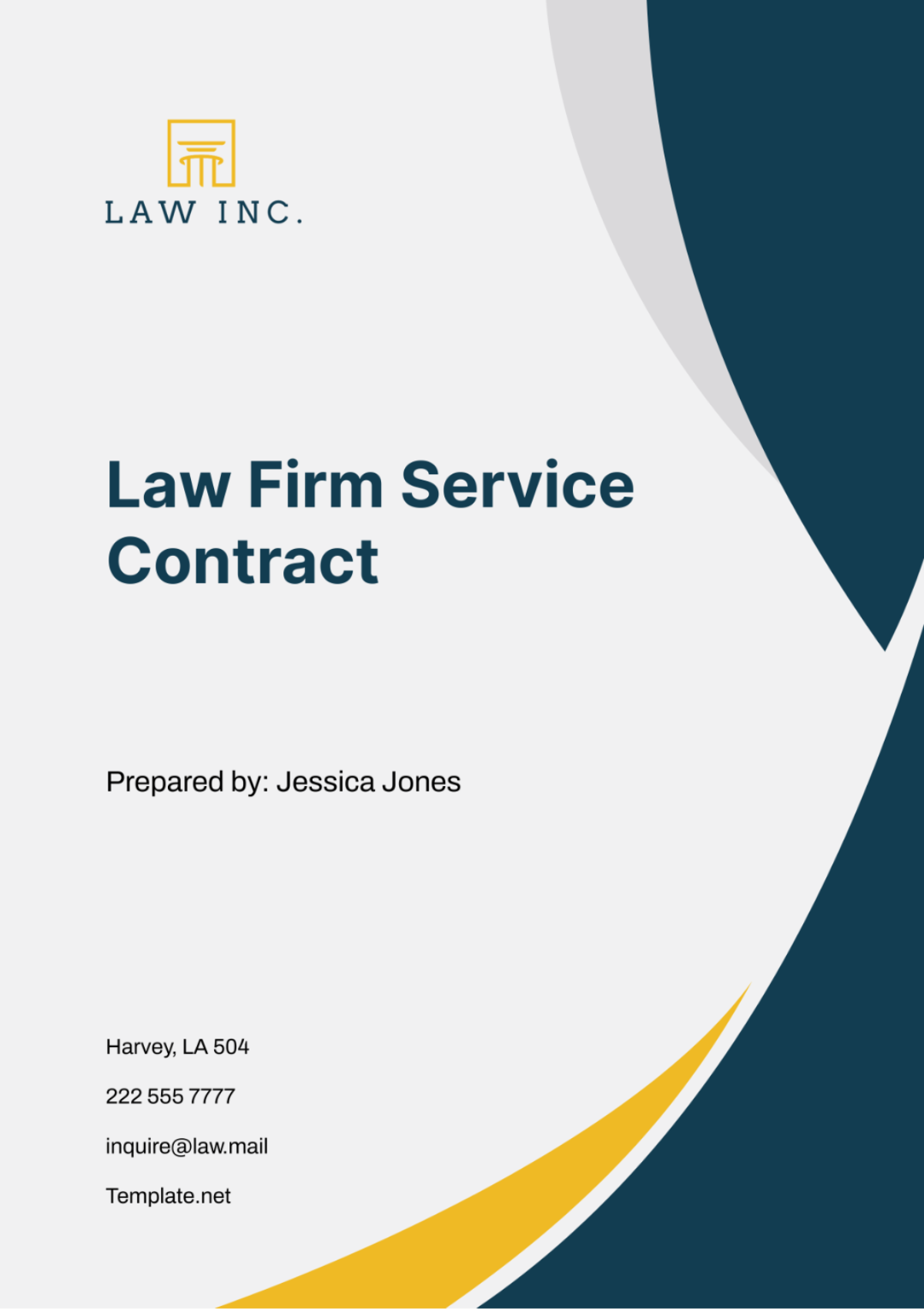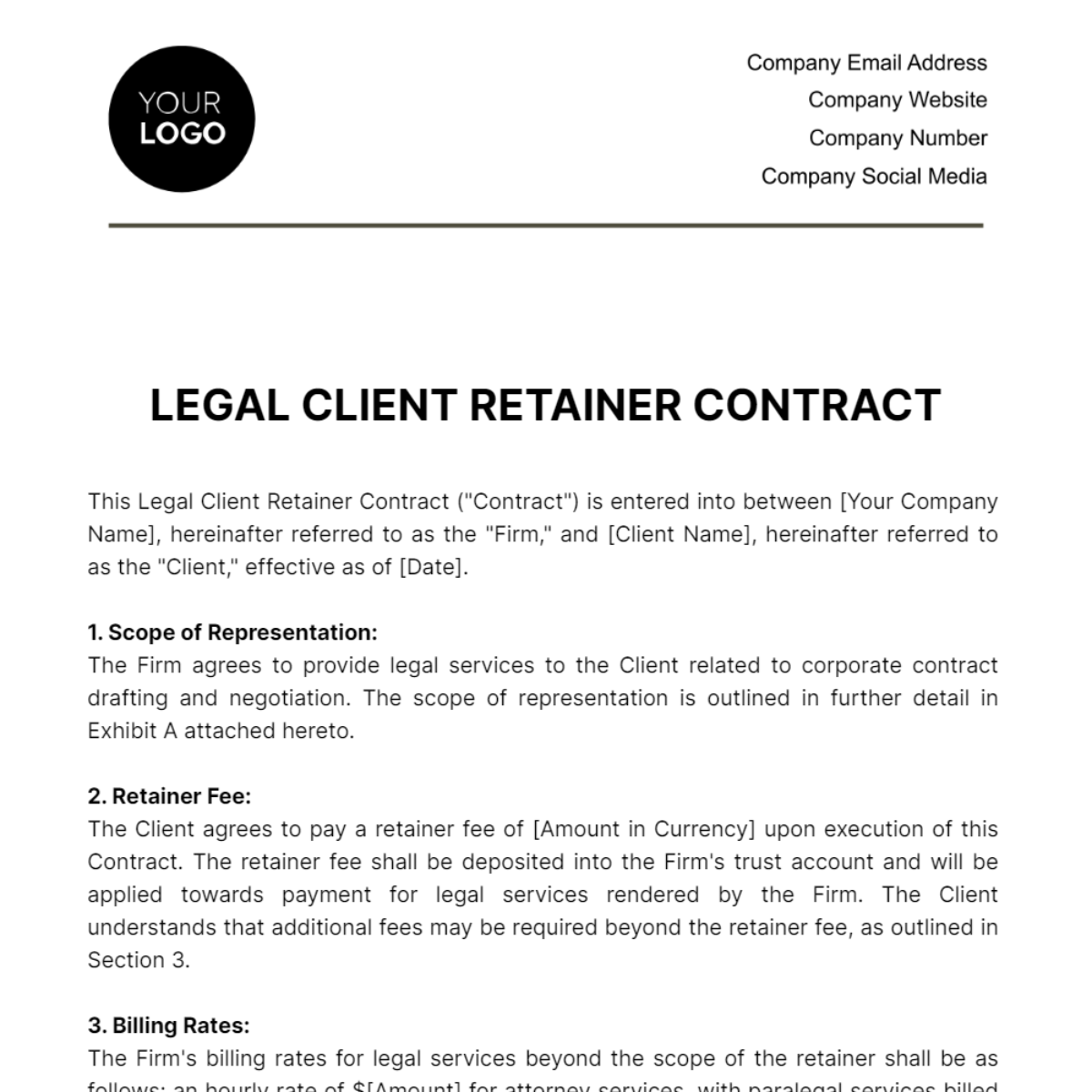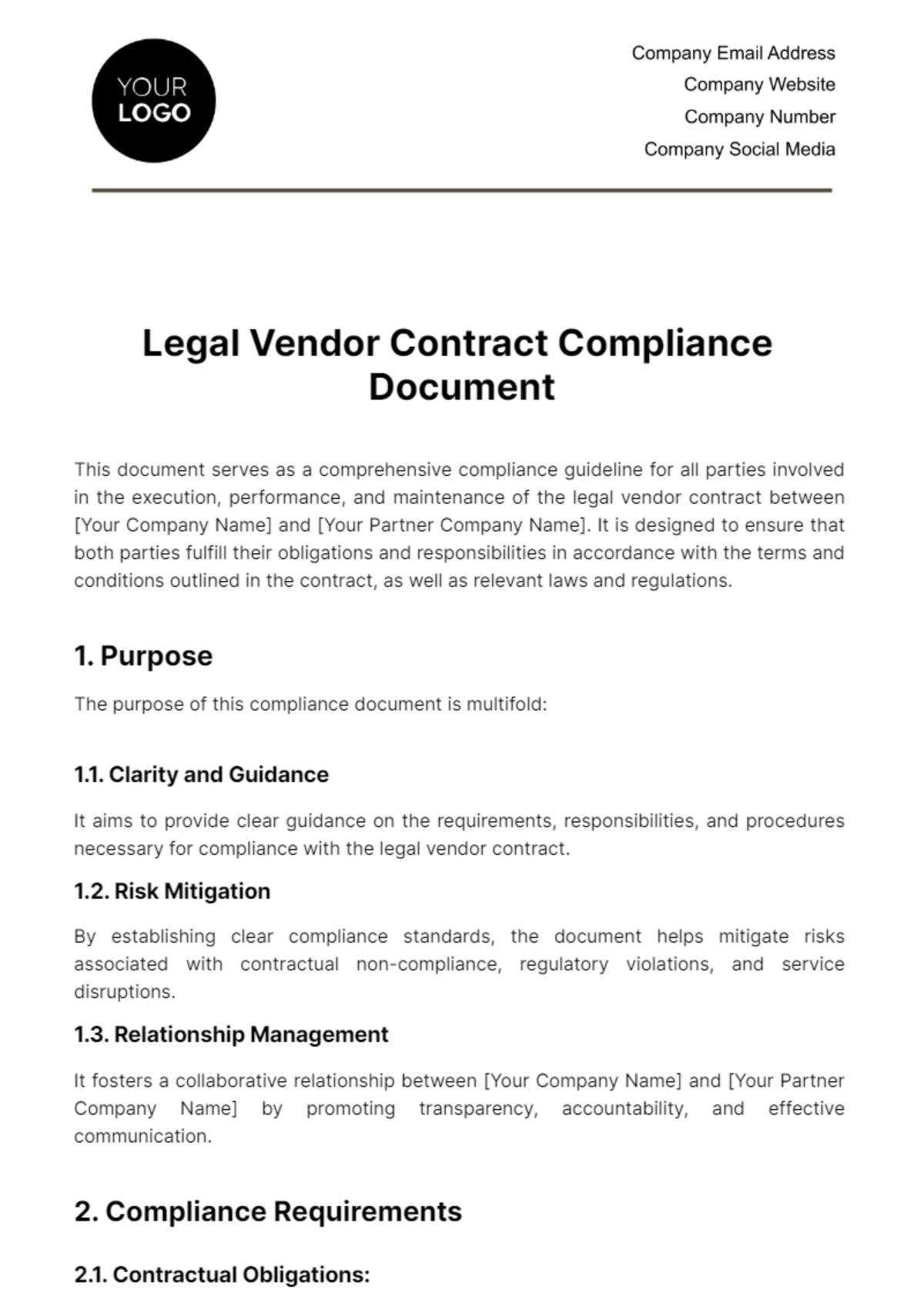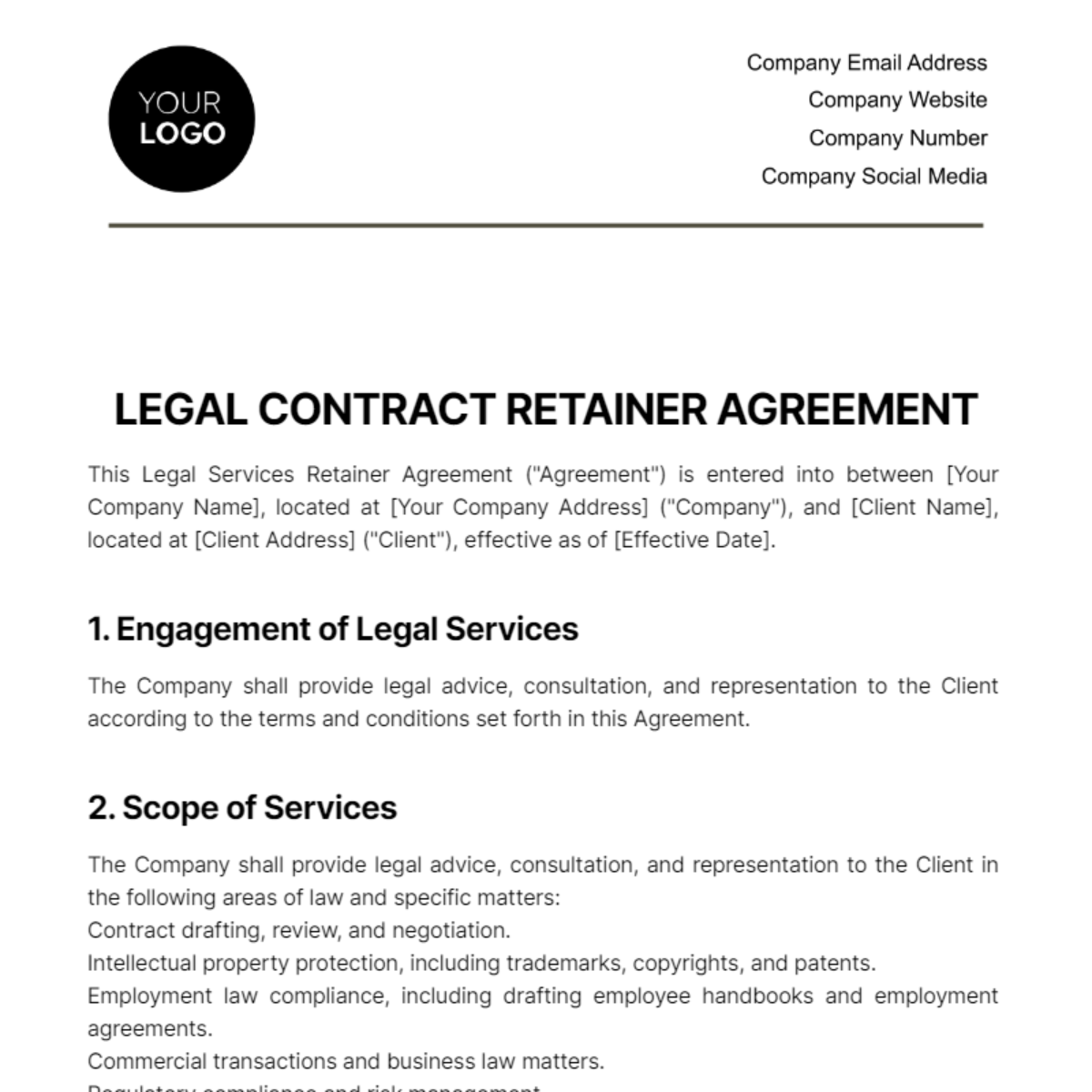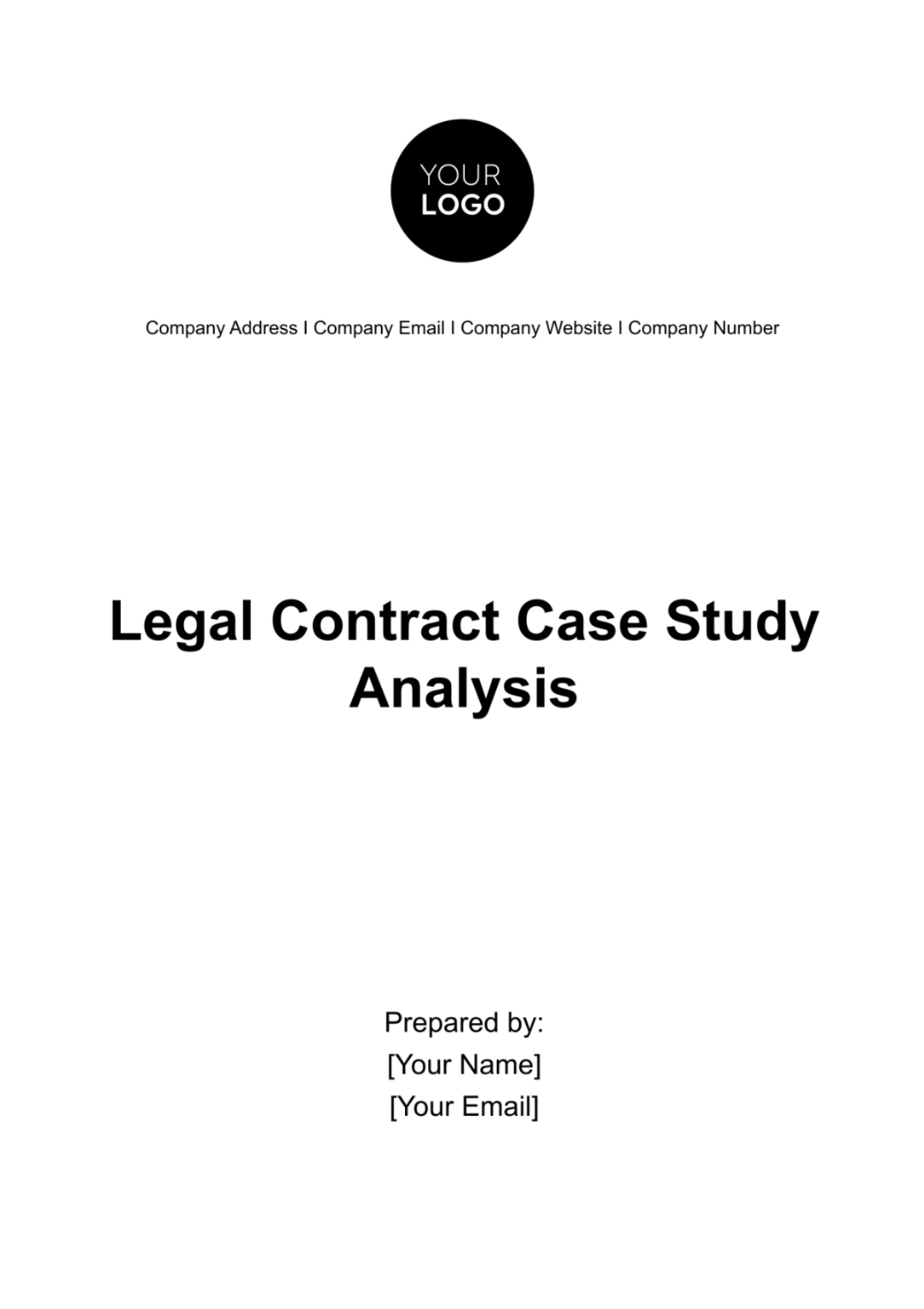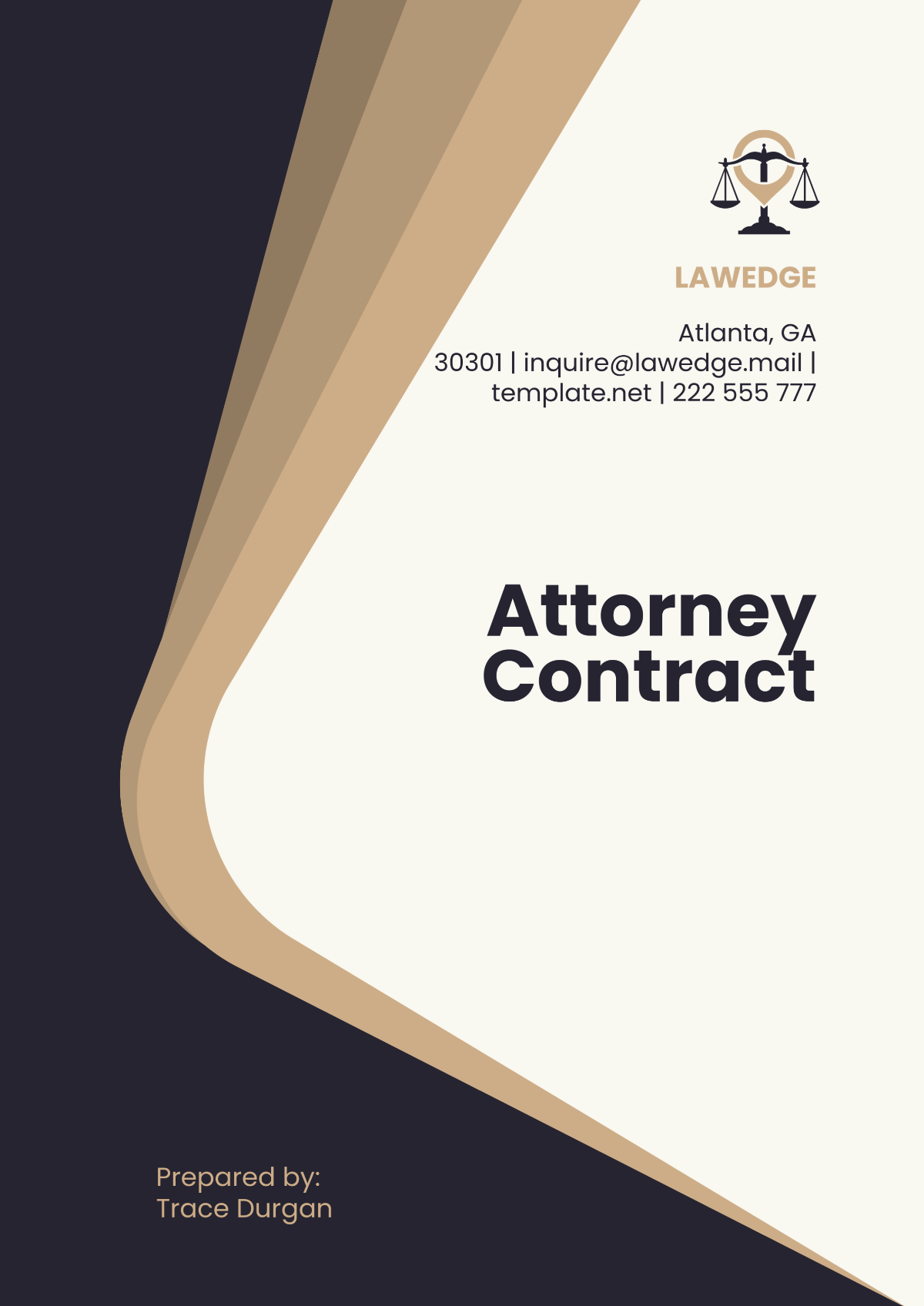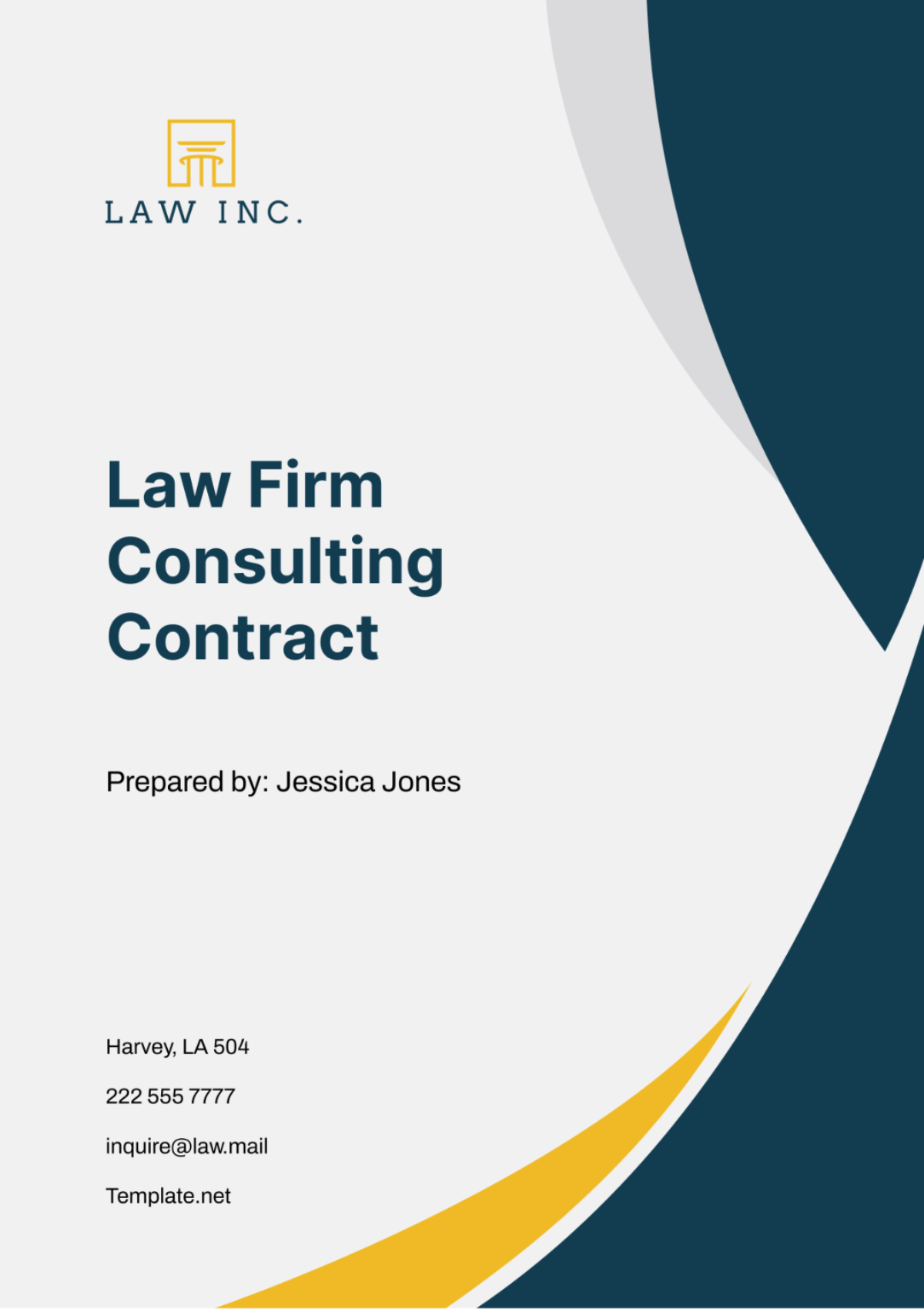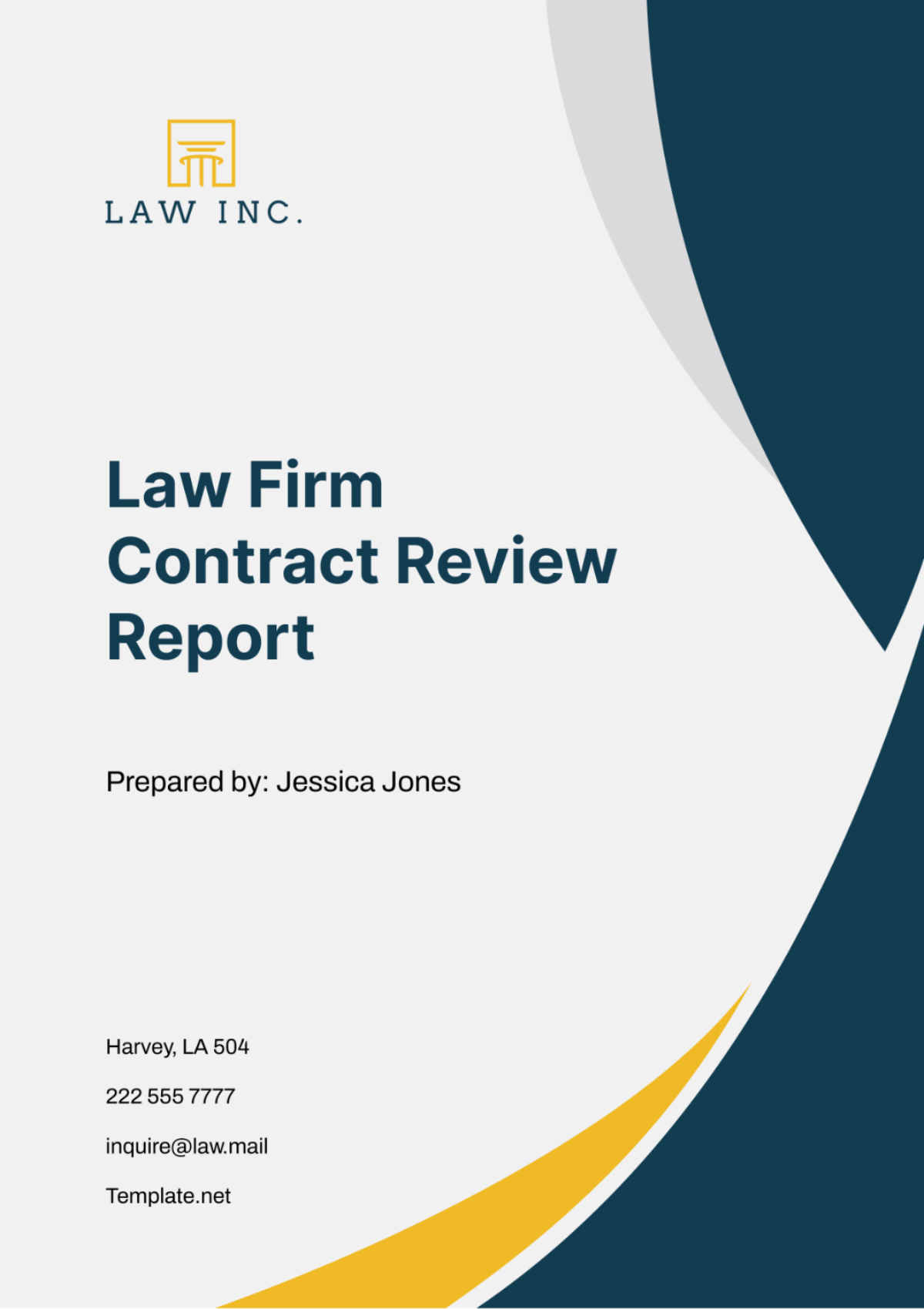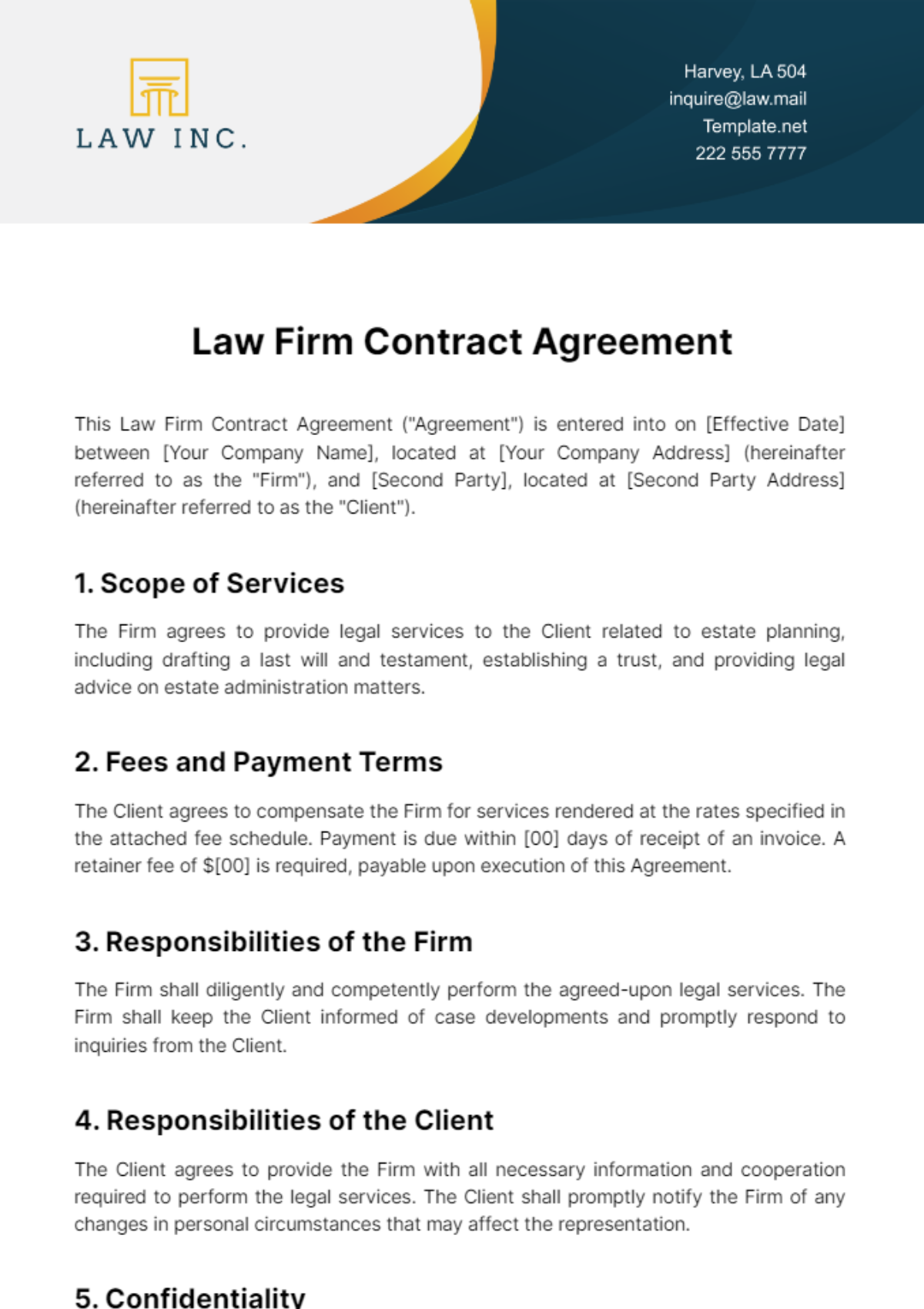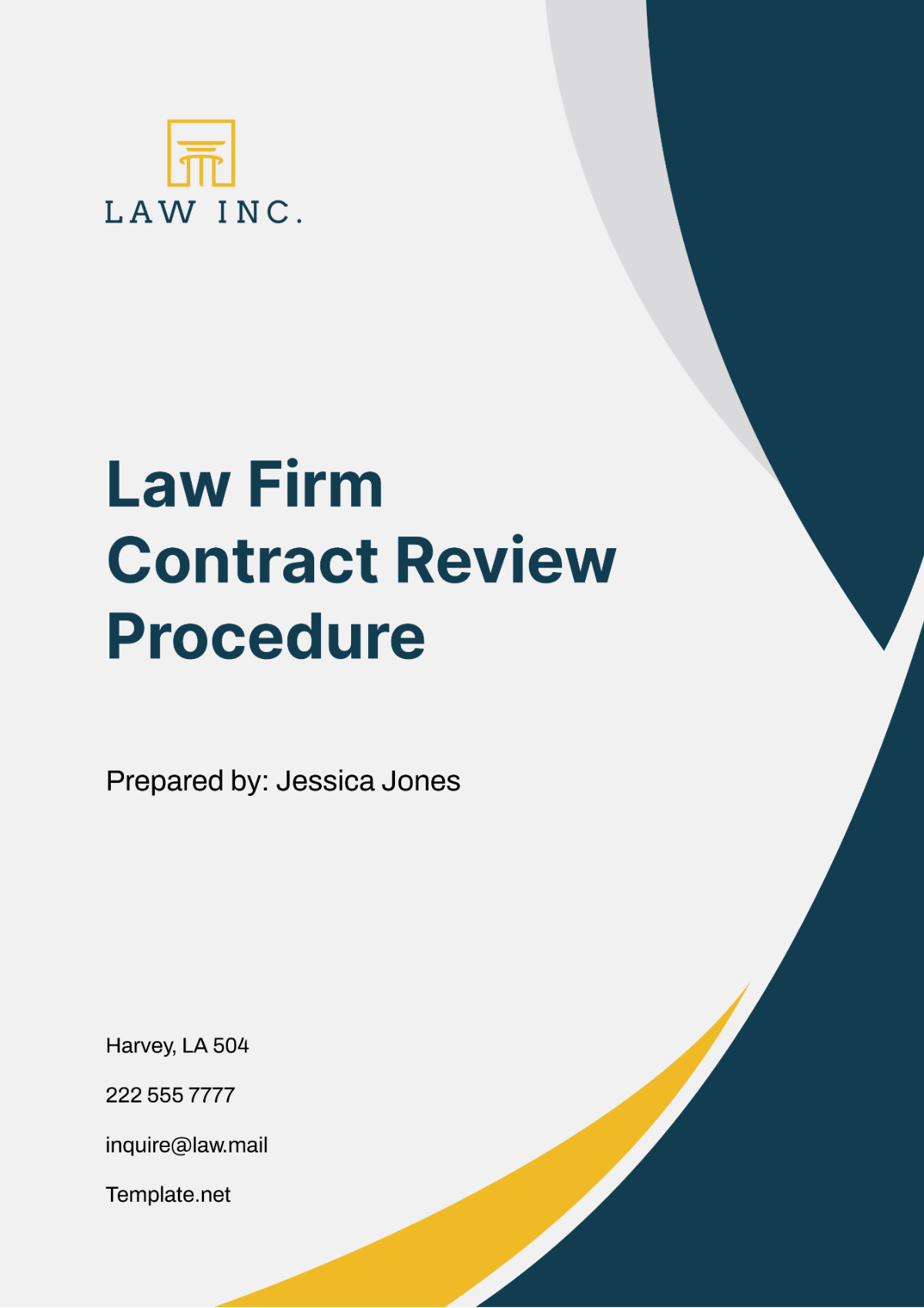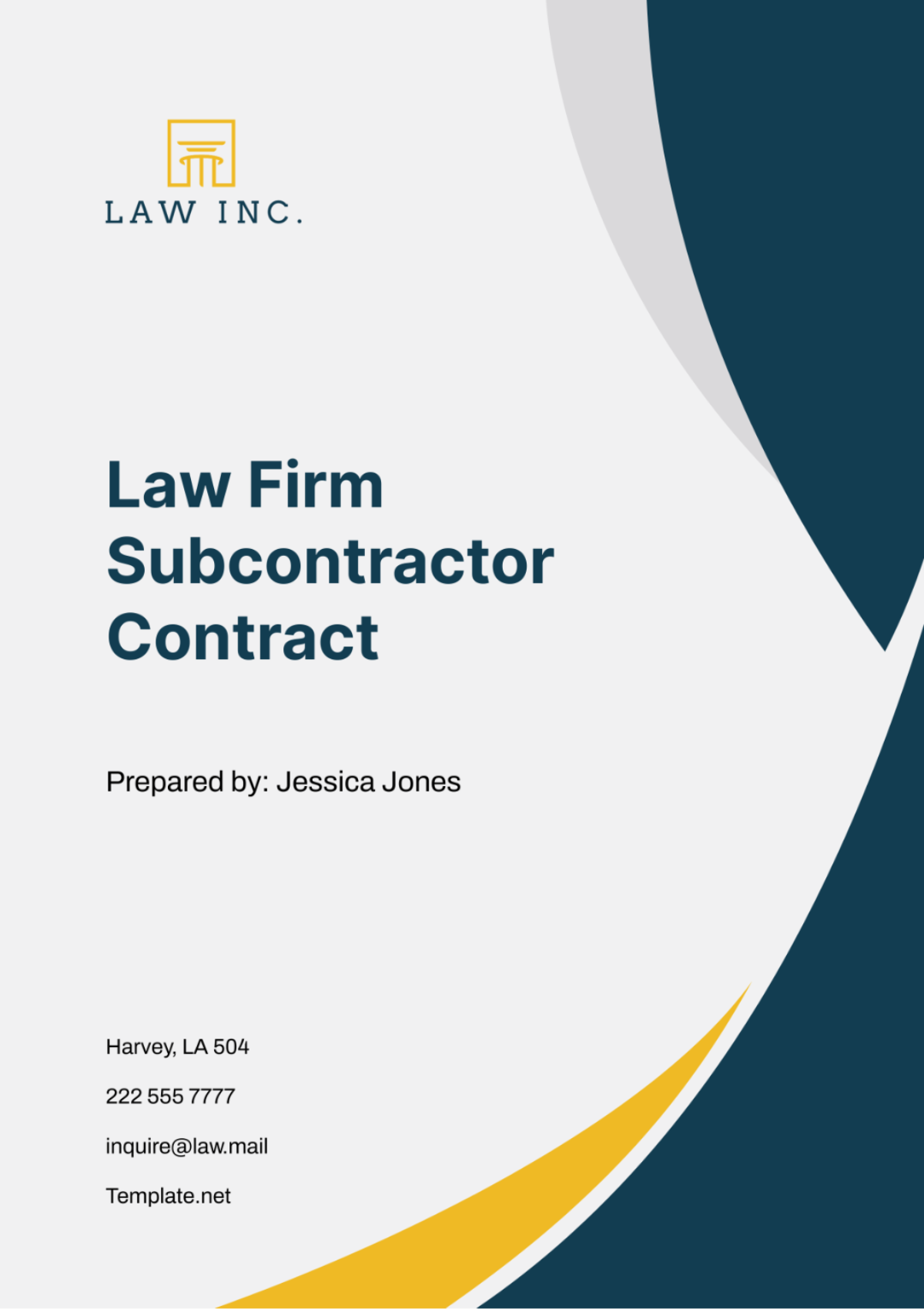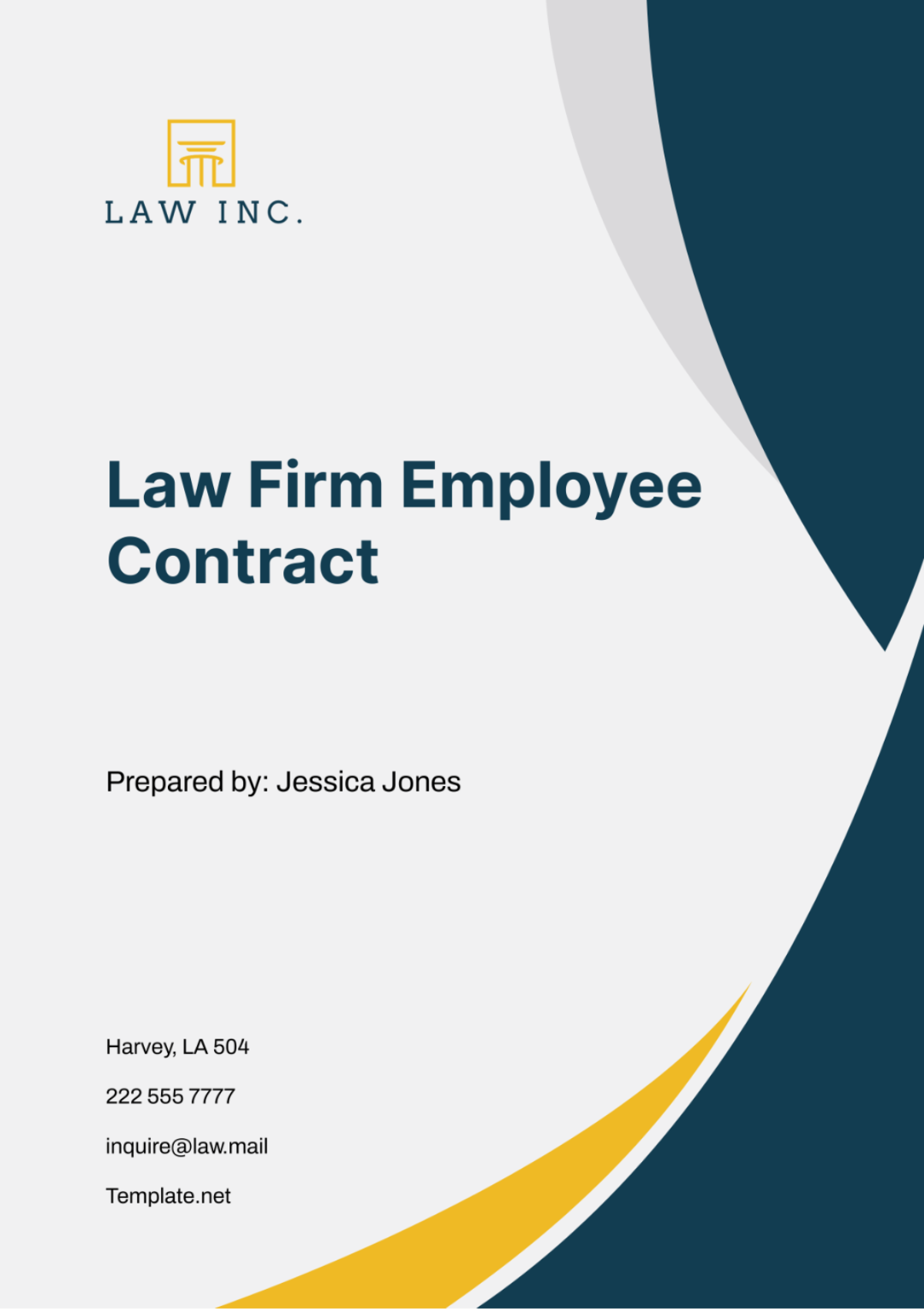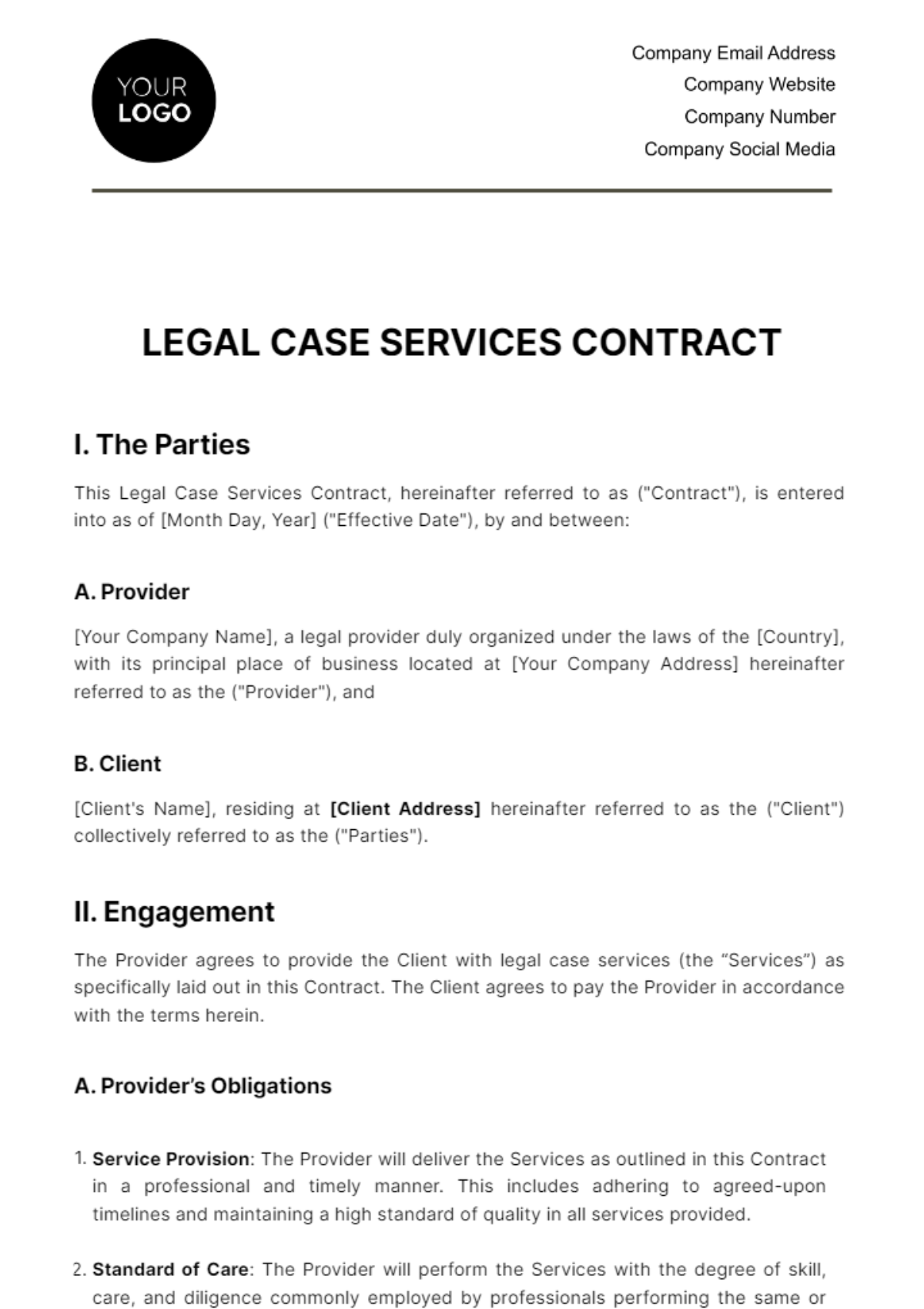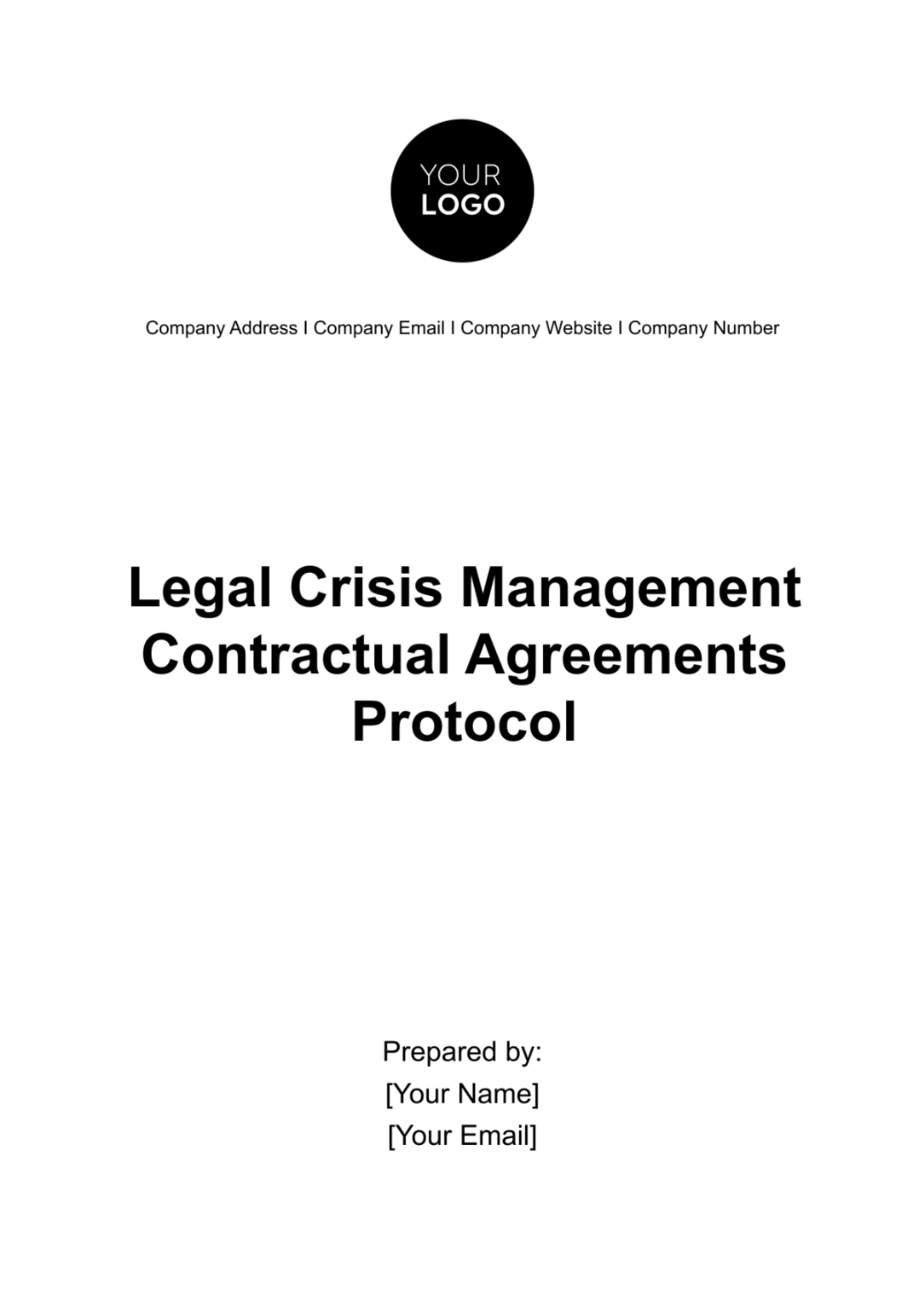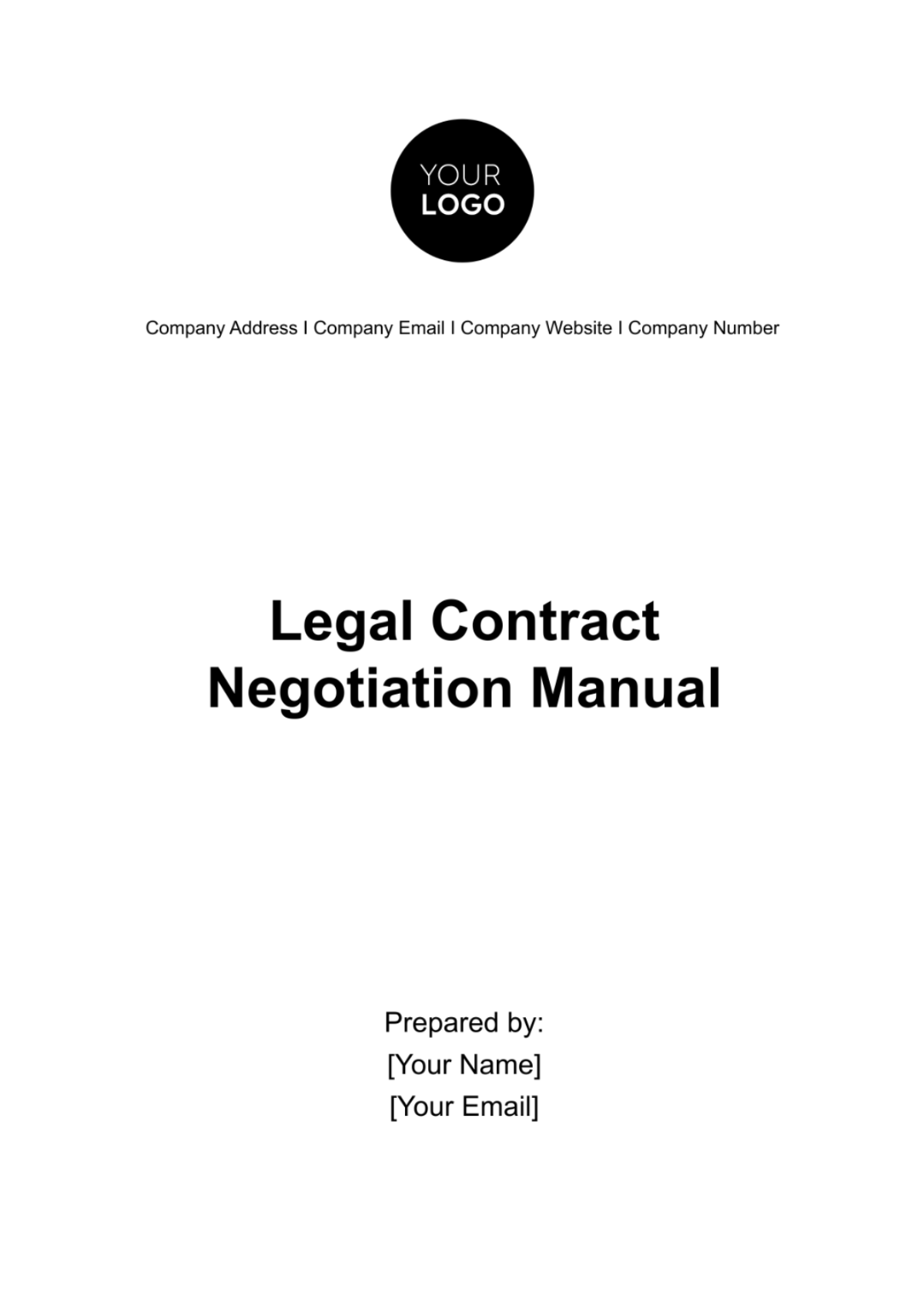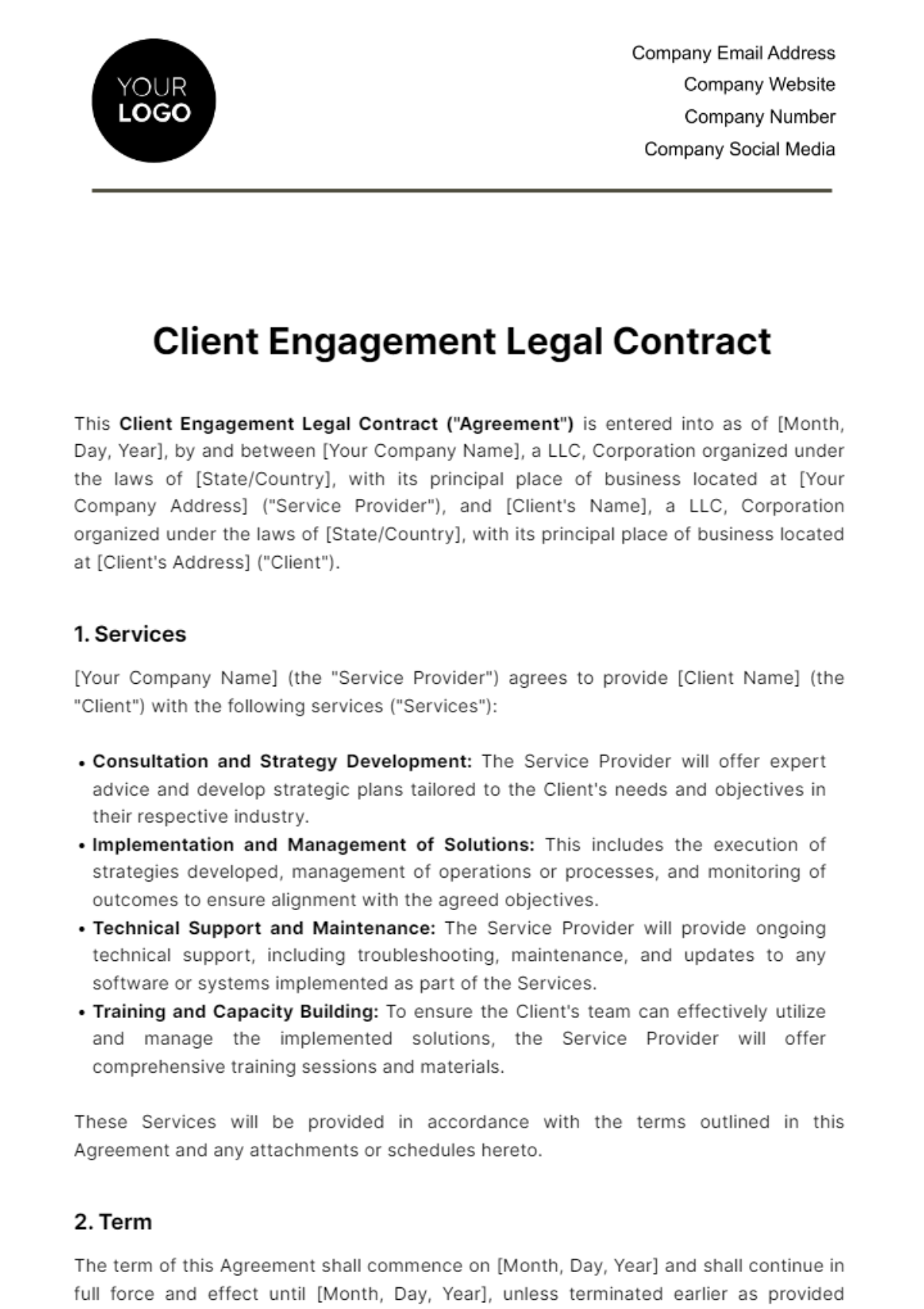Law Firm Contract Review Procedure
I. Introduction
A. Scope
Applicability: This procedure applies to all contract reviews undertaken by our team. It is relevant to all employees who are involved in the contract review process in any capacity.
Flexibility: While the procedure provides a comprehensive guide, it allows for flexibility based on the specific needs of each contract review. Employees are encouraged to use their judgment and adapt the procedure as necessary.
Legal Compliance: The procedure ensures that all contract reviews are conducted in accordance with applicable laws and regulations, and in line with the best practices in the legal industry.
B. Importance
Risk Management: Contract review is a critical risk management tool. It helps our firm identify and mitigate legal risks associated with the contracts we enter into.
Client Service: It is a key part of the service we provide to our clients. It helps us ensure that our clients’ interests are protected in their contractual relationships.
Business Strategy: It also supports our business strategy. It helps us understand the contractual obligations and rights that could impact our strategic goals.
C. Target Audience
Legal Team: The primary audience for this procedure is the legal team at our firm. They are responsible for conducting contract reviews in line with this procedure.
Management Team: The management team also needs to understand this procedure. They need to ensure that contract review is integrated into our broader business processes and strategies.
All Employees: All employees who are involved in negotiating, signing, or managing contracts need to be aware of this procedure. They need to understand the importance of contract review and how to initiate it.
Before we proceed to the definitions, it’s important to note that contract review is a complex process that requires a deep understanding of contract law, sharp analytical skills, and meticulous attention to detail. It’s a critical part of our work and plays a key role in serving our clients and managing our legal risks.
D. Definitions
To ensure clarity and mutual understanding, the following key terms used in this procedure are defined:
Contract: A legally binding agreement between two or more parties.
Contract Review: The process of examining a contract to understand its terms and conditions, and to identify any potential issues or risks.
Legal Risk: The potential for losses due to legal proceedings or contract non-compliance.
Risk Assessment: The process of identifying and evaluating risks.
Negotiation: The process of discussing terms and conditions in order to reach an agreement.
Approval: The process of formally agreeing to a contract.
Execution: The act of signing a contract, making it legally binding.
Contract Modification: The process of making changes to a contract.
Contract Management System: A system used to store and manage contracts.
Privileged Information: Information that is protected from being disclosed in a lawsuit due to an existing legal privilege.
II. Pre-Review
A. Contract Receipt
Upon receipt of a contract, the responsible attorney at our firm takes the following steps:
Logging the Contract: The attorney logs the contract into our contract management system. This ensures that all contracts are accounted for and can be easily tracked. It also helps in maintaining a record of all contractual obligations and rights, which is crucial for effective contract management.
Initial Review: The attorney conducts a quick initial review of the contract. This helps the attorney get a sense of the contract’s purpose and complexity. It involves understanding the key terms of the contract, the parties involved, and the obligations and rights of each party.
Scheduling the Review: The attorney schedules the contract for a detailed review. This ensures that the contract review process begins in a timely manner. It involves setting a date and time for the review and allocating the necessary resources for the task.
Identifying Key Stakeholders: The attorney identifies the key stakeholders for the contract. This could include the parties to the contract, the team members who will be involved in the contract review, and any other individuals who may be affected by the contract.
Communication Plan: The attorney establishes a communication plan for the contract review. This includes determining how and when updates will be communicated to the stakeholders, and setting up a system for addressing any questions or concerns that may arise during the review process.
B. Initial Assessment
The initial assessment is a crucial part of the contract review process at our firm. The following table outlines the key steps involved in the initial assessment process:
No. | Steps | Description |
|---|---|---|
1 | Understand Contract’s Purpose | This involves reviewing the contract to understand its purpose. |
2 | Identify Parties Involved | This involves identifying all the parties to the contract. |
3 | Identify Type of Contract | This involves identifying the type of contract to understand the legal rules that apply. |
The initial assessment helps us understand the contract and guides our review process. By understanding the contract’s purpose, the parties involved, and the type of contract, we can conduct a more effective and efficient contract review.
Understanding the Contract’s Purpose: The first step in the initial assessment process involves understanding the contract’s purpose. This involves reviewing the contract to understand what it is intended to achieve and what obligations it imposes on the parties. This step is crucial as it helps us understand the context of the contract and guides our review process.
Identifying the Parties Involved: The second step involves identifying all the parties to the contract. This helps us understand who has rights and obligations under the contract. It’s important to accurately identify all the parties to ensure that the contract is legally binding and enforceable.
Identifying the Type of Contract: The third step involves identifying the type of contract. This helps us understand the legal rules that apply to the contract. Different types of contracts are governed by different legal rules, so it’s important to correctly identify the type of contract.
Overall, the initial assessment helps us identify potential issues at an early stage. This allows us to address these issues before they become problems, ultimately helping us better serve our clients and manage our legal risks.
C. Contract Categorization
Contract categorization involves classifying the contract based on various factors such as the type of contract, the parties involved, and the subject matter of the contract. This helps in organizing the contracts and streamlining the review process. The responsible attorney at our firm takes the following steps:
Identifying the Type of Contract: The attorney identifies the type of contract. This could be a sales contract, a service contract, a lease agreement, etc. Categorizing the contract by type helps the attorney anticipate the key issues that may arise in the contract review.
Identifying the Parties Involved: The next step is identifying all the parties involved in the contract. This includes not only the parties signing the contract, but also any third parties who may be affected by the contract. Categorizing the contract by the parties involved helps the attorney understand the relationships between the parties and the potential legal obligations and rights of each party.
Identifying the Subject Matter: Then, the subject matter of the contract will be identified. This could be the sale of goods, the provision of services, the lease of property, etc. Categorizing the contract by subject matter helps the attorney understand the context of the contract and the potential legal issues that could arise.
Identifying the Jurisdiction: The attorney then identifies the jurisdiction governing the contract. This could be the state or country whose laws apply to the contract. Categorizing the contract by jurisdiction helps the attorney understand the legal framework within which the contract operates.
Identifying the Contract Term: The final step is the identification of the term of the contract. This is the period during which the contract is in effect. Categorizing the contract by term helps the attorney understand the duration of the parties’ obligations and rights under the contract.
III. Contract Review Process
A. Detailed Review
The detailed review is a thorough examination of the contract. This includes reviewing the terms and conditions, identifying any potential legal risks, and noting any terms that may need to be negotiated.
Understanding the Contract: The first step in the detailed review is to understand the contract. This involves reading the contract carefully, understanding its structure, and identifying its key terms and conditions.
Identifying Key Terms: The next step is to identify the key terms of the contract. These are the terms that define the rights and obligations of the parties, and they are crucial to understanding the contract.
Assessing Legal Risks: After identifying the key terms, we assess the legal risks associated with the contract. This involves considering the potential legal implications of each term and how it could impact our client.
Noting Unfavorable Terms: During the review, we note any terms that may be unfavorable to our client. These are terms that could put our client at a disadvantage or expose them to unnecessary risk.
Identifying Ambiguous Terms: We also look for any terms that are ambiguous or unclear. Such terms can lead to disputes in the future, so it’s important to identify them early.
Checking for Completeness: We check to make sure the contract is complete. This means making sure it includes all necessary terms and conditions, and that it doesn’t leave anything important out.
Preparing a Summary: After the detailed review, we prepare a summary of the contract. This includes a summary of the key terms, the identified risks, and any recommended actions.
Planning Next Steps: Based on the detailed review, we plan the next steps. This could include negotiating changes to the contract, seeking further legal advice, or proceeding with the contract as is.
B. Risk Assessment
Risk assessment involves evaluating the potential legal risks associated with the contract. The following table outlines the key risk levels that we consider during this process:
Risk Level | Description |
|---|---|
Low | The contract has minimal risks and is likely to be standard for the industry. |
Medium | The contract has some risks that may require further negotiation or legal advice. |
High | The contract has significant risks that may require extensive negotiation or legal advice. |
The risk assessment process helps us identify and understand the potential legal risks associated with a contract. This understanding guides our review process and helps us focus our efforts on the areas of greatest concern.
Low Risk: Contracts that fall into the low risk category are typically standard for the industry and have minimal risks associated with them. These contracts often involve routine transactions and standard terms and conditions. While these contracts still need to be reviewed carefully, they generally do not require extensive negotiation or legal advice.
Medium Risk: Contracts that are categorized as medium risk have some risks that may require further negotiation or legal advice. These contracts may involve more complex transactions, non-standard terms and conditions, or higher stakes. These contracts require a more detailed review and may require some negotiation to address the identified risks.
High Risk: High risk contracts have significant risks that may require extensive negotiation or legal advice. These contracts often involve complex or high-stakes transactions, significant potential liabilities, or unusual terms and conditions. These contracts require a thorough review, and often involve extensive negotiation and the input of legal counsel to address the identified risks.
In general, by categorizing contracts based on their risk level, we can allocate our resources more effectively. We can focus our time and effort on the contracts that pose the greatest risk, while still ensuring that all contracts are reviewed thoroughly.
C. Negotiation Preparation
If necessary, the attorney prepares for negotiation. This includes identifying the terms to be negotiated, developing a negotiation strategy, and preparing negotiation talking points.
Identifying Negotiation Terms: The first step in negotiation preparation is to identify the terms that need to be negotiated. These are typically the terms that were identified as potentially problematic during the detailed review.
Developing a Negotiation Strategy: Next, we develop a negotiation strategy. This involves deciding how we will approach the negotiation, what our goals are, and how we will respond to potential counteroffers.
Preparing Talking Points: We then prepare talking points for the negotiation. These are the key points that we want to make during the negotiation to support our position.
Anticipating Counterarguments: We also anticipate potential counterarguments from the other party. This helps us prepare responses and strengthens our negotiation position.
Reviewing Legal Implications: We review the legal implications of our negotiation strategy. This ensures that our strategy is legally sound and in the best interests of our client.
Scheduling the Negotiation: Finally, we schedule the negotiation. This involves coordinating with the other party to find a mutually agreeable time and place for the negotiation.
IV. Post-Review
The post-review phase is the final stage of the contract review process. It involves modifying the contract based on the review and negotiation, seeking approval for the modified contract, and managing the contract after it has been executed.
A. Contract Modification
If necessary, the attorney modifies the contract based on the review and negotiation. This involves the following steps:
Identifying Required Changes: The first step in contract modification is to identify the changes that are required. These are typically the changes that were agreed upon during the negotiation.
Making the Changes: The attorney then makes the required changes to the contract. This involves carefully amending the contract’s terms and conditions while ensuring that the contract remains legally sound.
Reviewing the Changes: After making the changes, the attorney reviews them to ensure they accurately reflect the agreed-upon terms and that they do not introduce any new issues or risks.
Preparing a Summary of Changes: The attorney prepares a summary of the changes. This helps all parties understand what changes have been made and why.
Communicating the Changes: The attorney communicates the changes to all relevant parties. This includes explaining the changes, why they were made, and what they mean for the parties.
B. Approval and Execution
The attorney seeks approval for the modified contract from the relevant parties. Once approved, the contract is executed. This involves the following steps:
Seeking Approval: The attorney seeks approval for the modified contract from all relevant parties. This typically involves presenting the contract and the summary of changes to the parties and addressing any questions or concerns they may have.
Executing the Contract: Once the contract is approved, it is executed. This involves all parties signing the contract, thereby making it legally binding.
Recording the Execution: The attorney records the execution of the contract. This involves updating our contract management system to reflect that the contract has been executed and storing a copy of the executed contract.
Communicating the Execution: The attorney communicates the execution of the contract to all relevant parties. This ensures that everyone is aware that the contract is now in effect and understands their rights and obligations under the contract.
C. Contract Management
After the contract has been executed, it needs to be managed effectively. The following table outlines the key steps involved in contract management:
No. | Steps | Description |
|---|---|---|
1 | Compliance Monitoring | This involves monitoring the parties’ activities to ensure they are complying with the terms and conditions of the contract. |
2 | Issue Resolution | This involves addressing any issues that arise during the life of the contract. This could include disputes over the interpretation of contract terms, non-compliance with contract terms, etc. |
3 | Contract Review | This involves reviewing the contract periodically to ensure it remains relevant and effective. This could involve checking that the contract still aligns with the parties’ needs and objectives, that it complies with any changes in law, etc. |
Contract management is a crucial part of the contract review process. It ensures that the contract continues to function effectively after it has been executed. It involves monitoring compliance with the contract, addressing any issues that arise, and reviewing the contract as necessary. Effective contract management helps us protect our interests, maintain good relationships with other parties, and achieve our business objectives.
Compliance Monitoring: Compliance monitoring is a crucial part of contract management. It involves monitoring the parties’ activities to ensure they are complying with the terms and conditions of the contract. This helps us identify any potential issues early and take corrective action before they escalate.
Issue Resolution: Issue resolution involves addressing any issues that arise during the life of the contract. This could include disputes over the interpretation of contract terms, non-compliance with contract terms, etc. Effective issue resolution helps maintain good relationships between the parties and ensures the contract continues to function effectively.
Contract Review: Contract review involves reviewing the contract periodically to ensure it remains relevant and effective. This could involve checking that the contract still aligns with the parties’ needs and objectives, that it complies with any changes in law, etc. Regular contract review helps us proactively manage our contracts and ensure they continue to serve their intended purpose.
V. Review and Update
A. Review
Regular Reviews: We conduct regular reviews of our contract review procedures to ensure they remain effective and up-to-date. These reviews are typically scheduled annually, but may be conducted more frequently if necessary.
Feedback Collection: As part of our review process, we collect feedback from our team and our clients. This feedback provides valuable insights into the effectiveness of our procedures and helps us identify areas for improvement.
Performance Metrics: We also review performance metrics, such as the number of contracts reviewed, the time taken for review, and the outcomes of our reviews. These metrics help us assess the efficiency of our procedures.
Legal Updates: Our reviews also take into account any changes in the law that may affect our contract review procedures. We stay up-to-date with legal developments and adjust our procedures accordingly.
Review Findings: After each review, we compile our findings into a report. This report includes an assessment of our current procedures, any identified issues or areas for improvement, and recommendations for changes.
Review Follow-Up: We follow up on each review to implement the recommended changes. We also monitor the impact of these changes to ensure they achieve the desired results.
B. Update
Need for Updates: Updates to our contract review procedures may be needed as a result of our reviews, changes in the law, or changes in our firm’s practices or client needs.
Update Process: Our update process involves revising our procedures, updating our training materials, and communicating the changes to our team and our clients.
Training: After any significant update, we provide training to our team. This ensures that everyone understands the new procedures and can implement them effectively.
Client Communication: We also communicate any significant changes to our clients. This ensures that they understand how the changes may affect our services and their contracts.
Ongoing Monitoring: After an update, we monitor the effectiveness of the new procedures. This involves tracking performance metrics, collecting feedback, and making further adjustments as needed.
